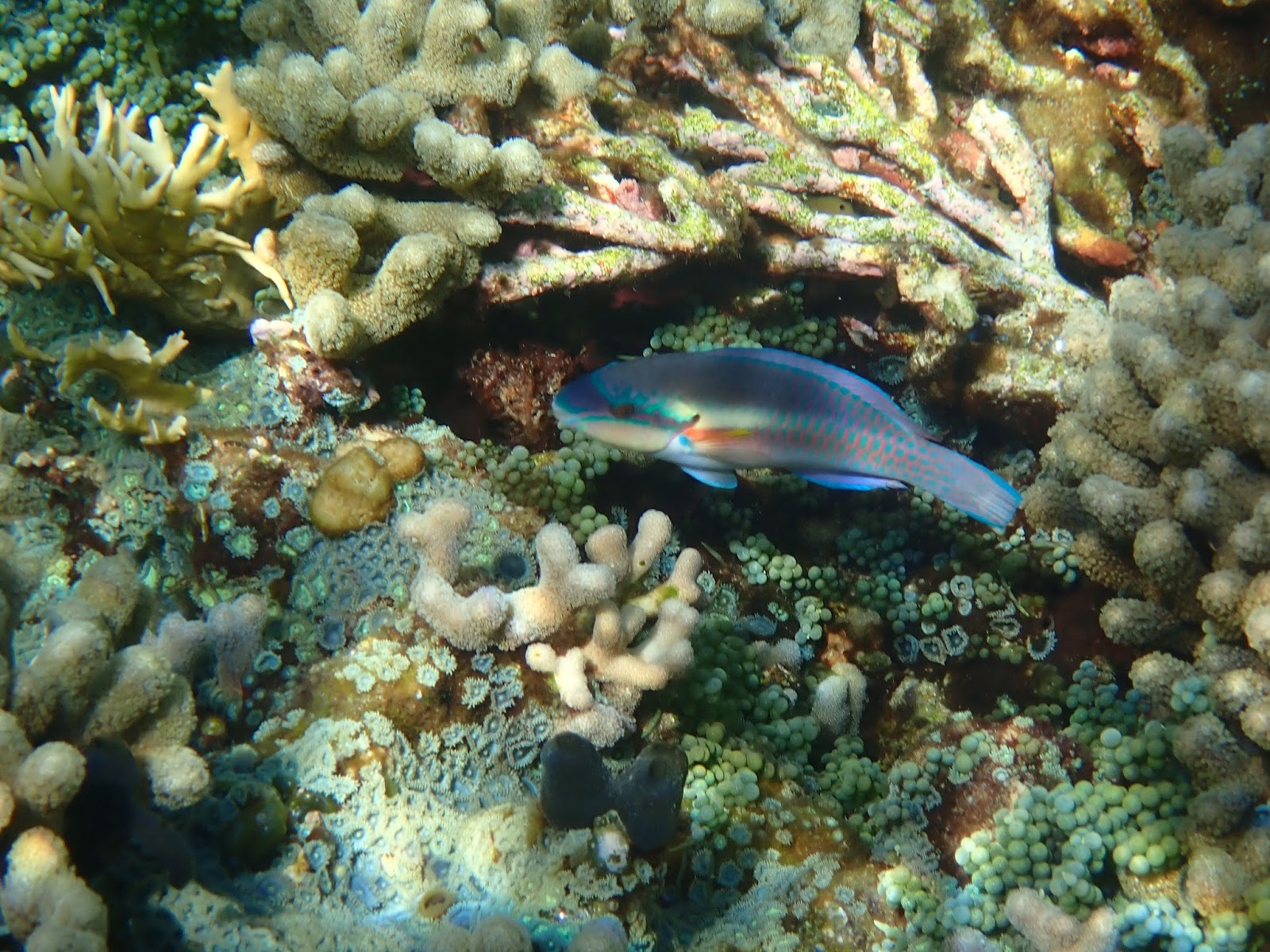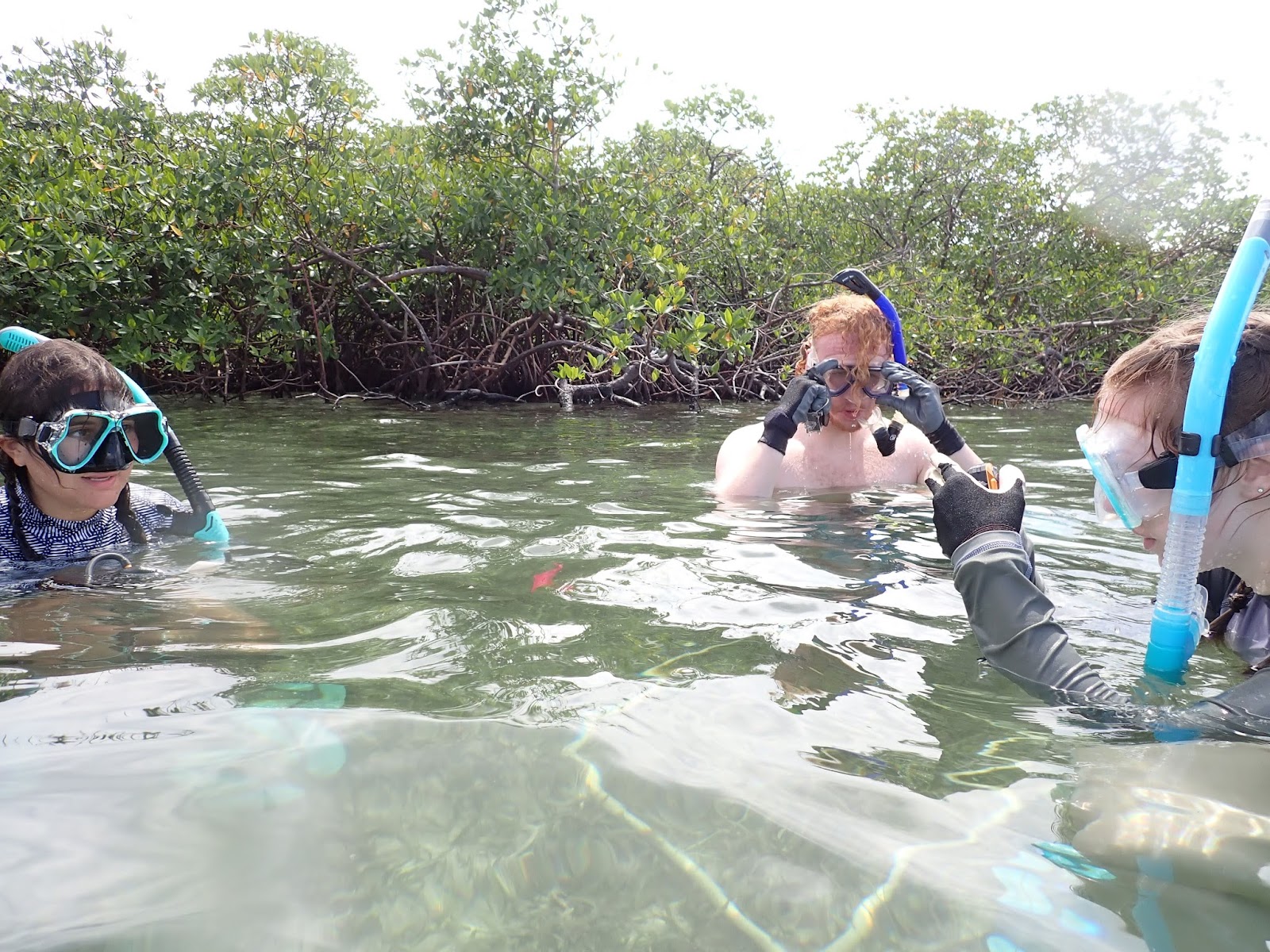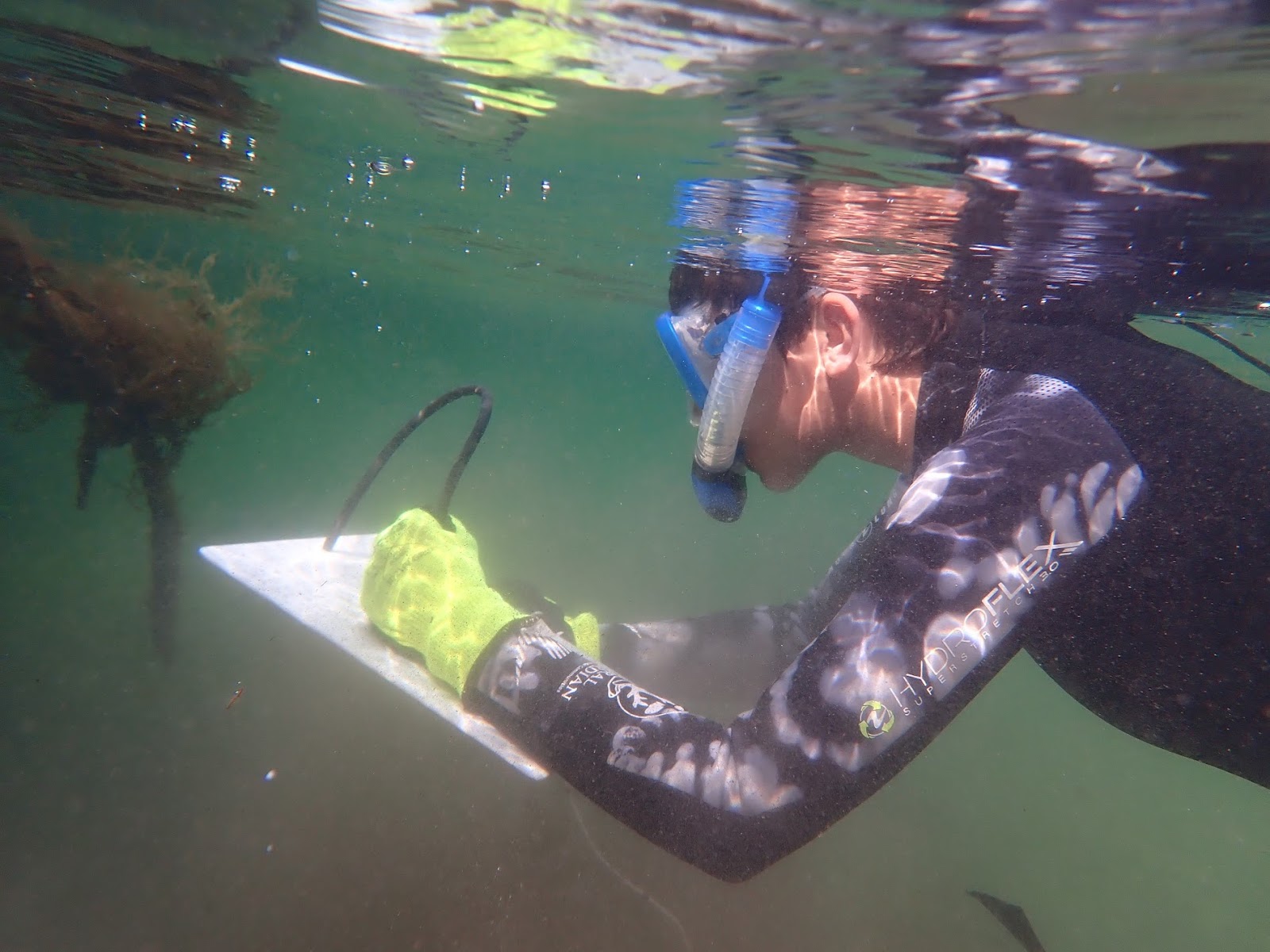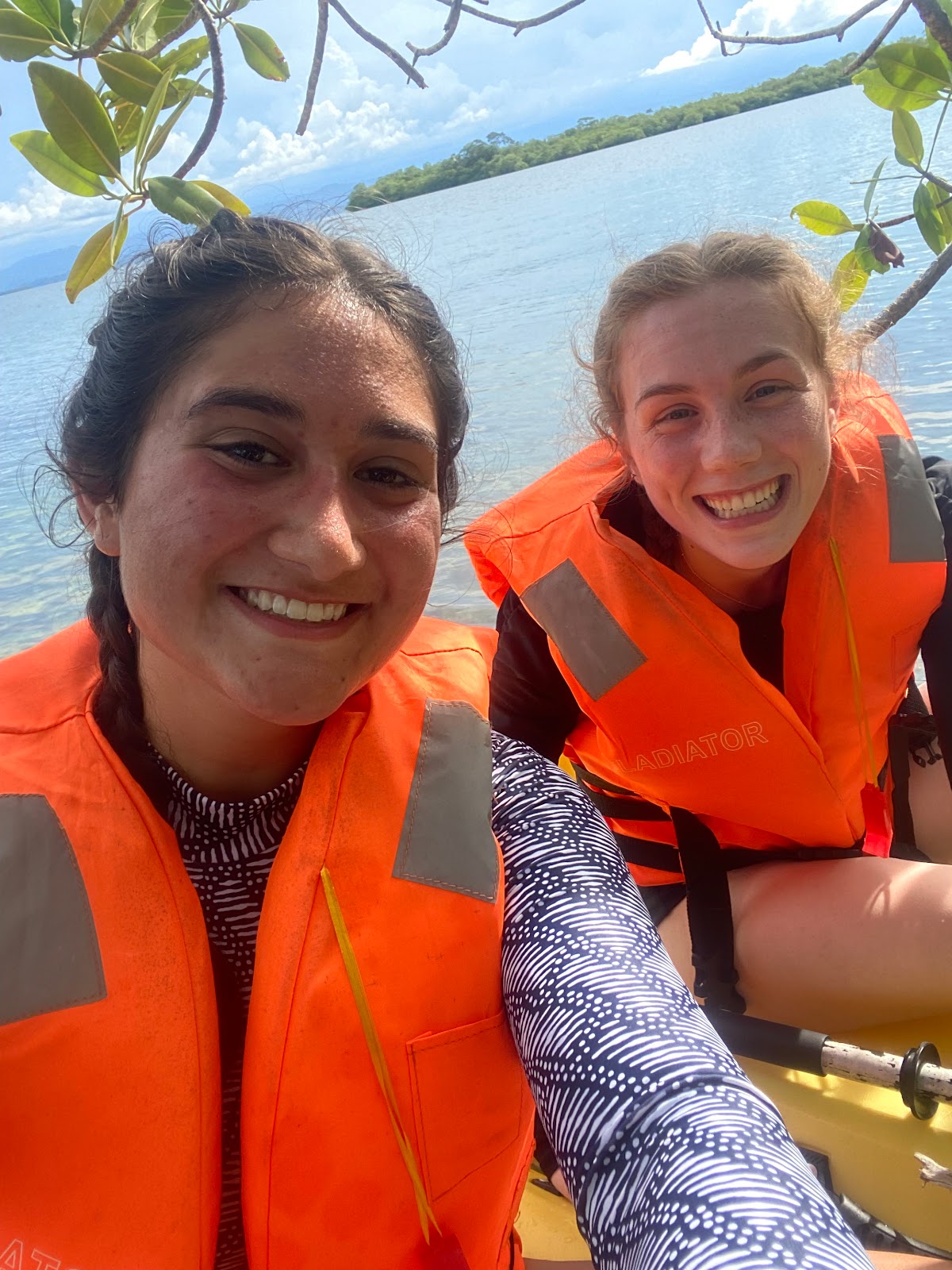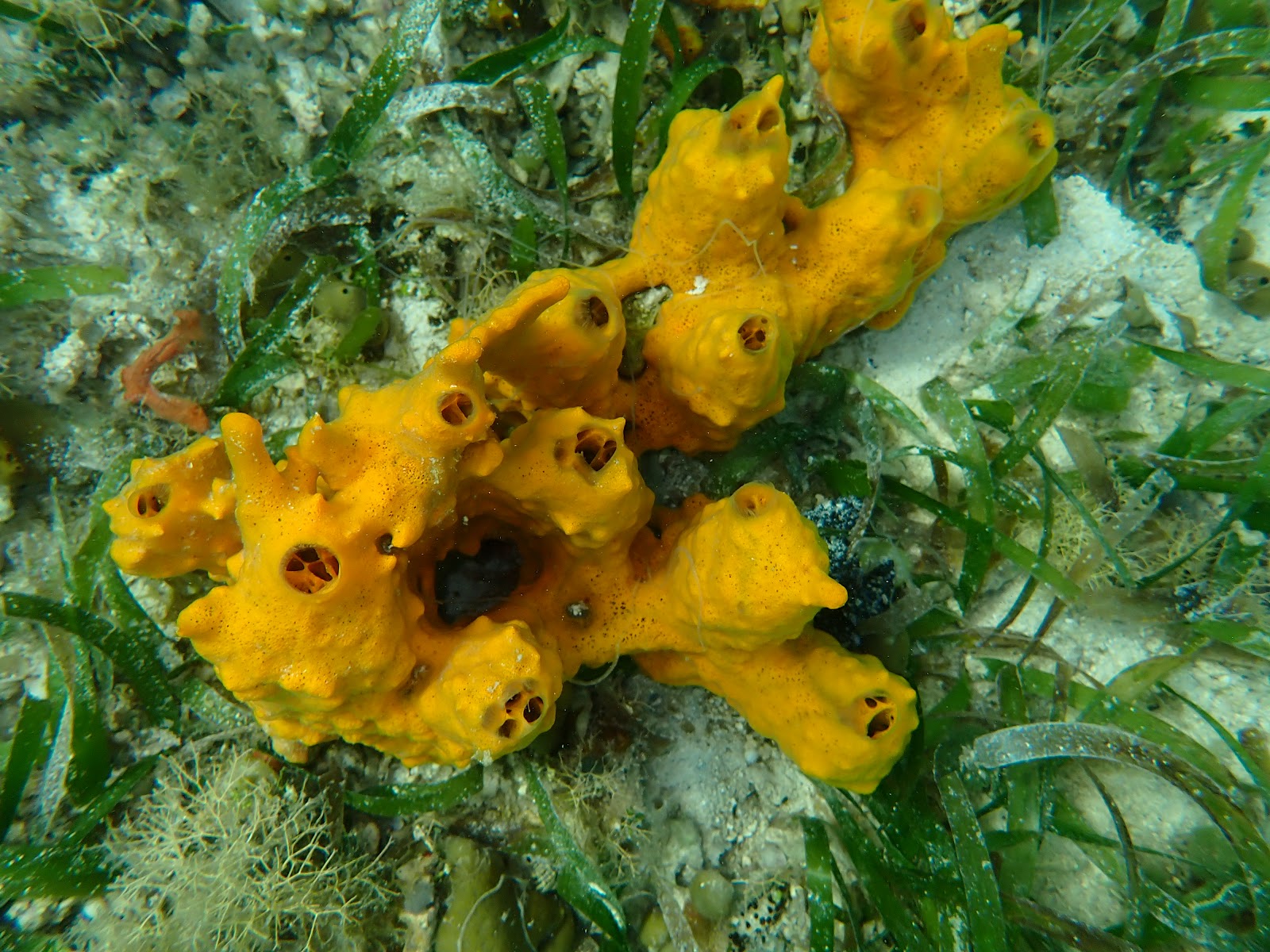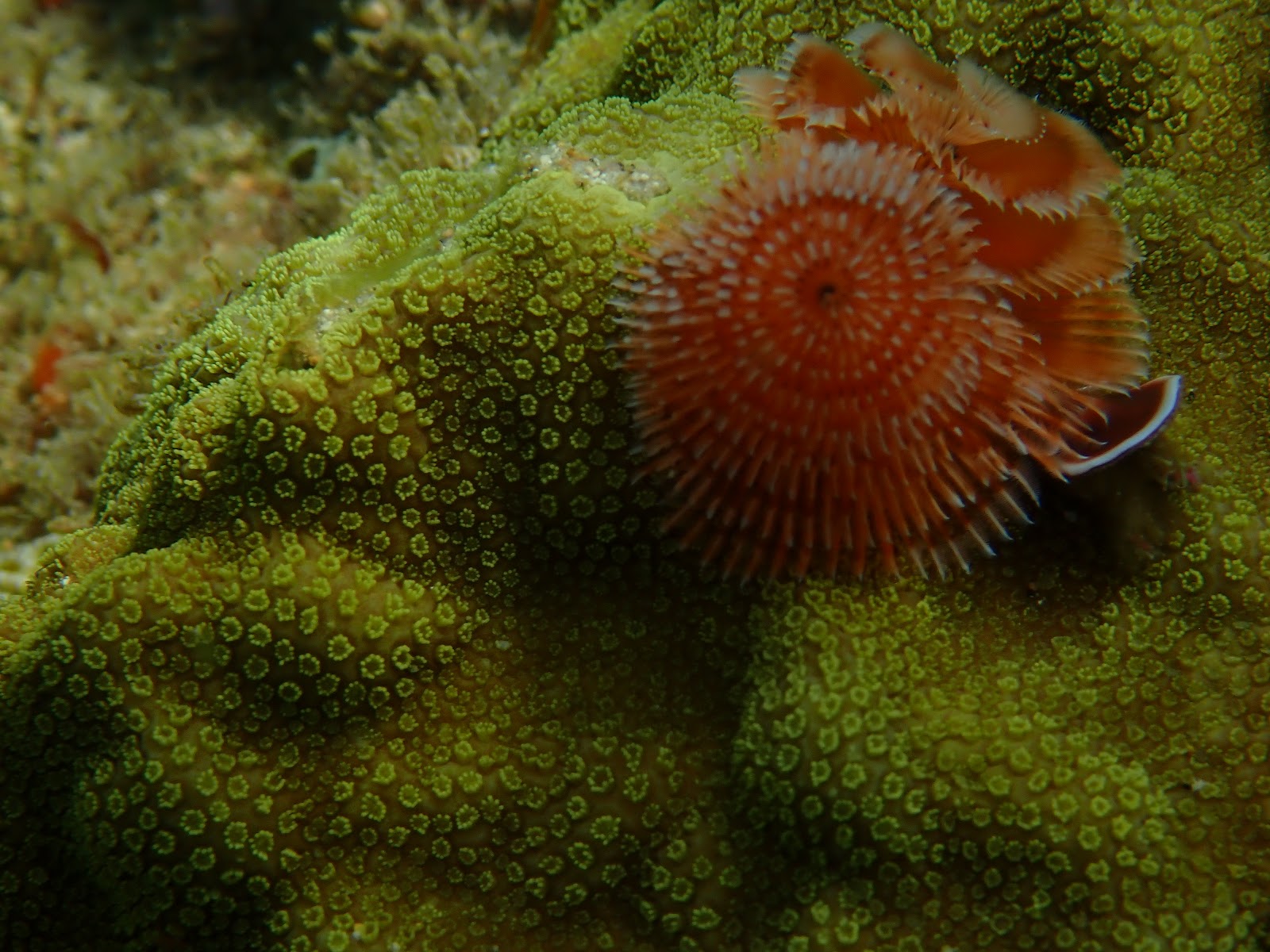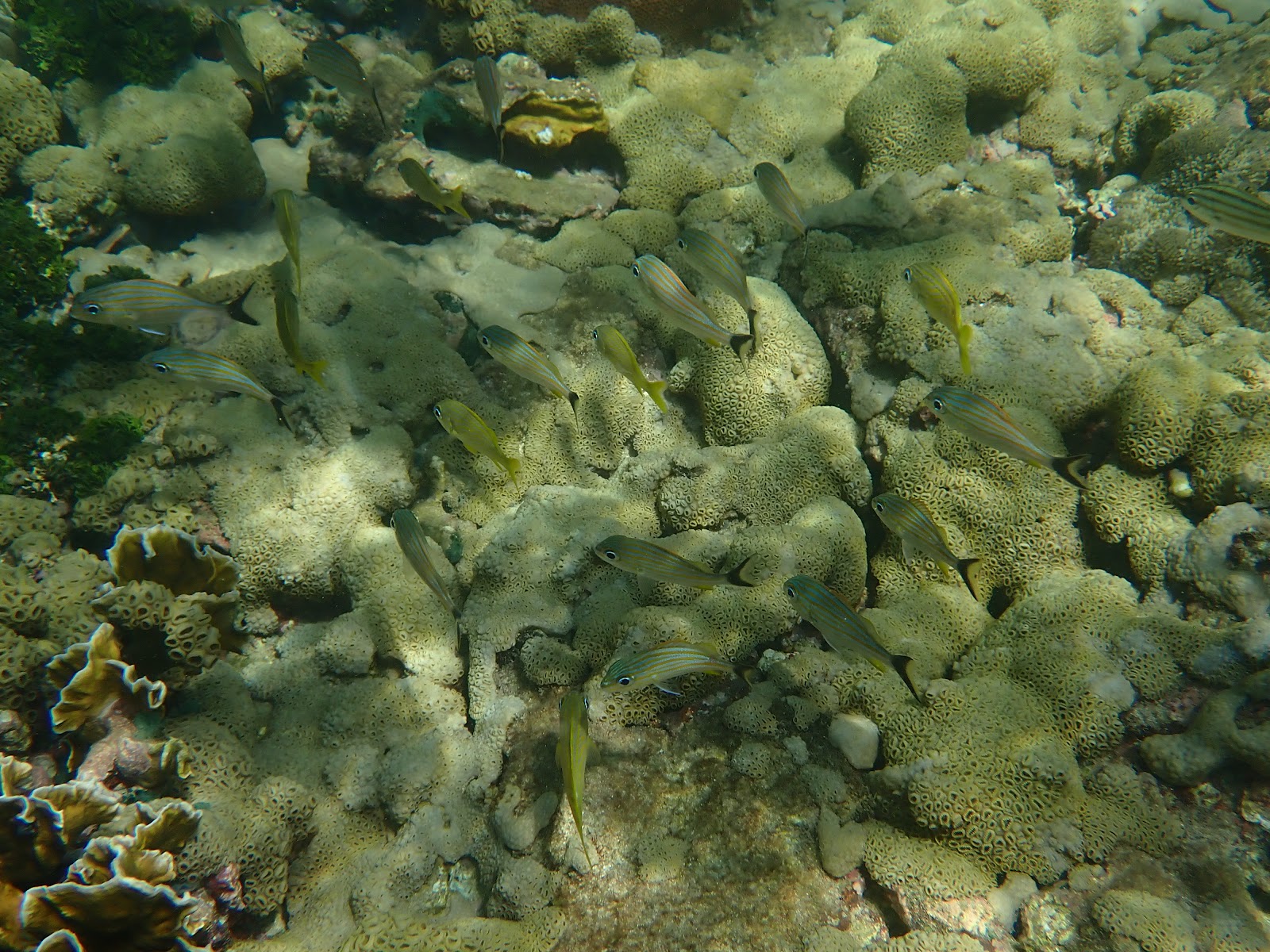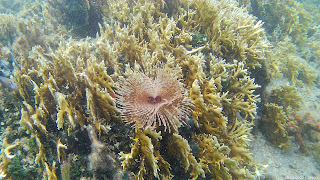We started off our morning with breakfast prepared by Desuze, and then headed off to the docks for another boat trip. The first site we went to was Point Cocos Reef 3, where we started by practicing some data collection at the coral reef. In groups, we went around to 5 different locations flagged for us by Maya and Richard, laying down a quadrat at each. From there, we identified percent cover of each species present. It was definitely difficult to count everything and coordinate with our group without hitting any of the coral. After we finished collecting the data, we had some time to explore the reef. It was amazing to see all of the coral present, it was a lot more than we had seen at other sites so far! I was especially excited to see lots of parrotfish, and a ray right as we were getting back into the boat.
After a short boat ride to our second snorkel site near Mangrove Point, Maya and Richard laid out more flags for us and we did a similar data collection, looking at the seagrass shoots close to and further from the mangroves. Without the coral to worry about and in shallower water, this location proved to be easier than the last. After collecting the data, we again got to snorkel around. We found several sea stars, and I really liked the tulip snail that Richard found!
Upon arriving back at STRI, we were ready to eat, and luckily were greeted by another wonderful lunch along with Desuze's delicious iced tea. After a quick break, we got to work on our research projects! My partner Jenna and I prepared some materials and headed out to the mangroves by House Reef. There, we measured mangrove root lengths as well as information about the species that we found on them - yesterday's lab was great practice.
Following another great dinner and delicious chocolate cake, we headed back to the lab. On our way there, we were greeted by a turtle just down the stairs! In the lab we looked at some of the quadrat pictures we had taken and tried to collect similar data to that which we had collected in the field. We found that it was much harder to identify smaller things from pictures - it was easy to miss them!
Now that it was dark, it was time to head out for a night snorkel! Several of us headed back into the water for a third time, enthusiastic to see what the darkness and late hours may bring that we couldn't see during the day. It was amazing to hear the fish in the quiet, and we were able to see some barracudas and burrfish! Getting out of the water, we had to avoid lots of box jellies around the docks. Luckily everyone made it back on land without getting stung! It was a great end to a long and busy, but very exciting day, and I am excited to see what tomorrow will bring!
-Sof



